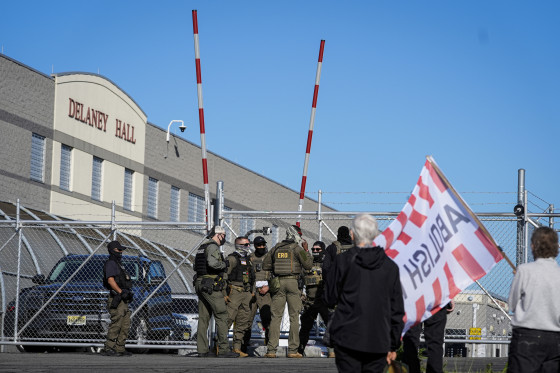Tricia McLaughlin: Spotlight on a DHS Spokesperson’s Role in the Newark ICE Facility Incident

The name Tricia McLaughlin has come to the forefront in recent coverage of events surrounding the Newark ICE facility. As the Department of Homeland Security (DHS) spokesperson, McLaughlin attracted national attention following a controversial confrontation that led to the arrest of Newark Mayor Ras Baraka and raised questions about the conduct of federal officers, members of Congress, and protesters. This article explores who Tricia McLaughlin is, the significance of her statements, and why her role matters in the current debate.
Who Is Tricia McLaughlin?
Tricia McLaughlin serves as a public spokesperson for the Department of Homeland Security. Her tenure at DHS involves communicating key departmental decisions, clarifications, and addressing the public during high-profile incidents. In May 2025, her name became a focal point when she made direct statements about alleged assaults at the Newark ICE detention facility during an oversight visit by elected officials.
The Newark ICE Facility Incident
The controversy began when several New Jersey Democratic House members visited the Delaney Hall ICE facility to conduct a surprise oversight check. During their visit, tensions escalated between lawmakers, clergy, activists, and federal officers. Newark Mayor Ras Baraka was arrested in the process, accused of trespassing, though he denies the charges, maintaining he acted within his rights as a public servant.
Tricia McLaughlin’s Statements and Their Impact
In the wake of the incident, Tricia McLaughlin made headlines by asserting that some members of Congress allegedly assaulted or even “body-slammed” ICE officers. She publicly discussed the possibility of arrests for House Democrats and underscored that DHS was in possession of body camera footage purportedly documenting the incident.
You can read a comprehensive report of McLaughlin's statements and their aftermath in this NBC News coverage. The article outlines the back-and-forth between Tricia McLaughlin, the involved members of Congress, and the media, highlighting the political tension inherent to ICE facility oversight and law enforcement accountability.
Differing Perspectives and Ongoing Investigations
The lawmakers present at the scene, including Reps. Bonnie Watson Coleman, Rob Menendez, and LaMonica McIver, all denied any physical altercations with officers. They characterized ICE’s approach as aggressive and the detention operations as lacking transparency. Meanwhile, both Mayor Baraka and the representatives challenge the legitimacy of the arrests and the DHS portrayal of events. In response, McLaughlin posted video clips on social media, reiterating DHS’s position and calling for respect for law enforcement.
AP News published the bodycam footage released by DHS, offering the public a direct look at the moments leading up to Mayor Baraka’s arrest. This release aimed to clarify the situation, though debate continues about the interpretation of these events.
The Broader Significance of Tricia McLaughlin’s Role
Tricia McLaughlin’s statements have amplified national conversations about lawmaker oversight, protest rights, and ICE facility operations. Her ability to convey DHS’s stance has both informed and polarized public reactions. As the investigation unfolds, McLaughlin remains a key figure shaping public perception and the political fallout from the Newark ICE controversy.
Conclusion
The Newark ICE facility incident has spotlighted Tricia McLaughlin as a spokesperson in a highly charged environment. Her remarks and the official DHS response have fueled debate about law enforcement, activism, and government accountability. For those seeking a detailed breakdown of recent developments, the NBC News article and the AP News bodycam footage provide authoritative starting points. As this story evolves, Tricia McLaughlin’s role demonstrates the power and influence of public communication in shaping complex issues facing our society.